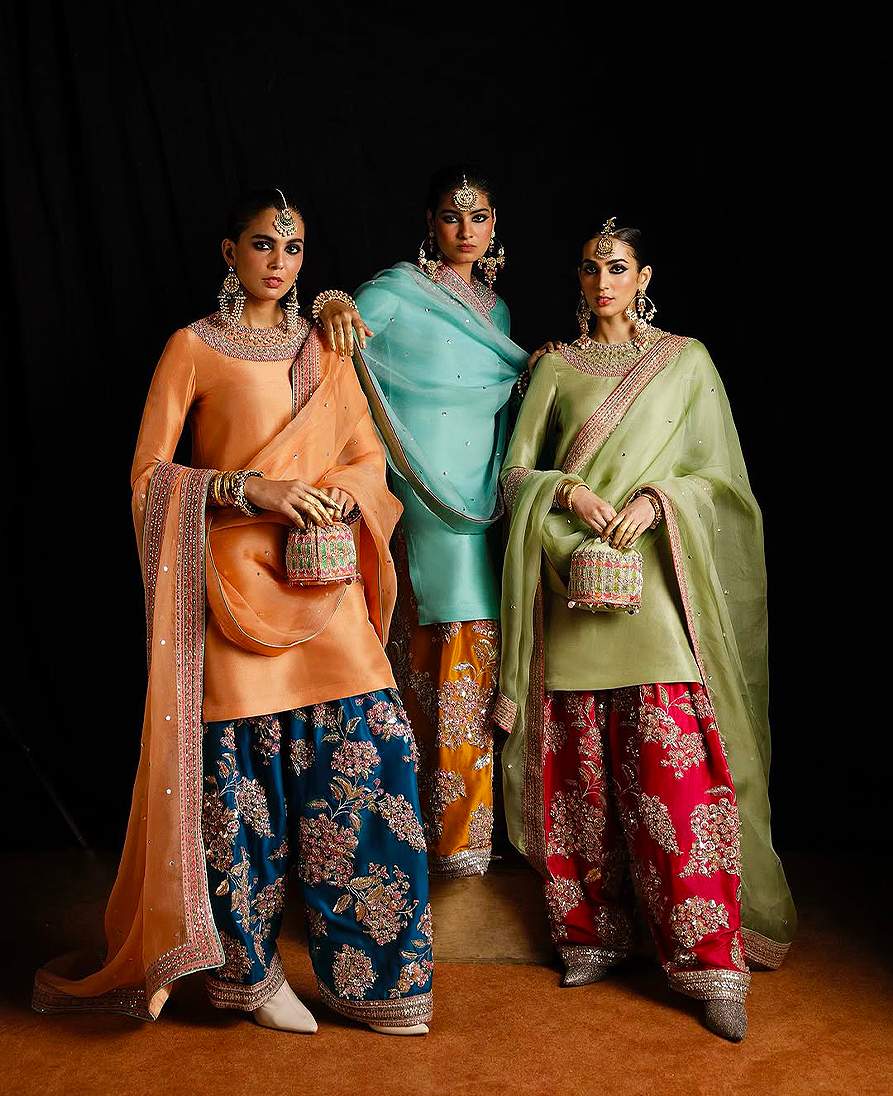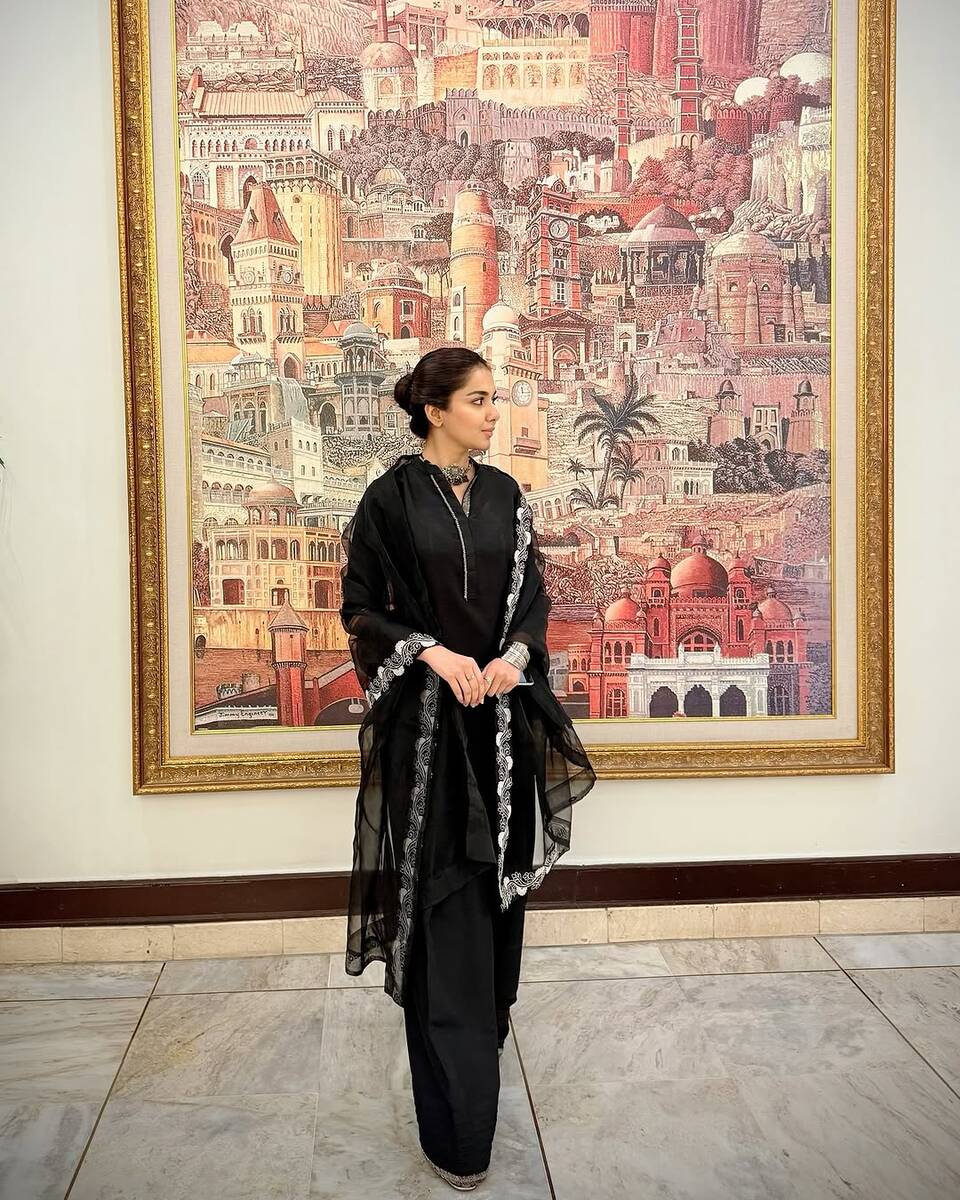MAKKAH: Makkah is famous for being a vibrant city throughout the year. Its long Umrah season, followed by the Hajj season, makes it a rich place visited by all nationalities from around the world. Makkah conforms to its culture, identity and profound heritage, especially during the holy month of Ramadan.
If you want to experience the aesthetics of Ramadan, Makkah is a Saudi city that’s wonderfully diverse. Citizens of different races were brought together by their love for Makkah, which they have chosen as a residence. This has characterized its identity and satisfied its customs and social patterns, making it unique among Saudi areas and cities.
The Mayor of Rea Zakher neighborhood, Fahad Al-Harbi, observes many traditions and historical features in Makkah, some of which have died out while others are still ongoing. Al-Harbi speaks of old neighborhoods that surrounded the Makkan sanctuary, and how they contributed to the culture of sharing and cooperating and laid friendliness in a small geographical area, linking districts and population centers of different races and spectrums.
Al-Harbi says Makkah witnesses an increased activity during Ramadan, one of the great occasions that reflect the cultures of this city’s citizens and how they create their own happiness.
The work in ful, Sobia, Arabic sweets and other shops increases and their owners are friendly with people. All owners of specific food sell their products with pleasure and ease. They sing beautiful tunes they inherited while selling balilah, fried dumplings and soup.
Al-Harbi also tells about districts in Makkah that become crowded every year owing to sports events and witness the residents of one neighborhood bringing lights and drawing the lines of football and volleyball playgrounds. Tournaments are also held during Ramadan where the neighborhoods’ mayors give away trophies in the final games.
“The citizens of many neighborhoods near the sanctuary, such as Al-Shubaikha, Al-Gemmezah, Al-Tundobawi, Jarwal and others, compete to serve pilgrims during Ramadan. They give them water during breakfast, guide lost people and help the elderly to get to the sanctuary, and these are traditions the citizens of Makkah are proud of, while considering them their duties,” Al-Harbi added.
Businessman and engineer Amin Hafez noted that throughout the years, the royal neighborhood has maintained its cultural value which reflects the spiritual and heritage side of Makkah. In its districts, the citizens of Makkah meet pilgrims and get to know each other, establishing a great brotherhood and beautiful friendship.
Hafez said the royal neighborhood included models of Makkan houses, popular cafés, small shops, old cars that were used in the past and the Makkan heritage and architectural museum. All this diversity has made Ramadan nights in the city incomparable with any other cities: they are old neighborhoods that were linked to the Makkan sanctuary, some of which have faded away with the commitments of widening the Grand Mosque.
One elderly man from the Jarwal area near the Makkah sanctuary, Faleh Al-Moutaweh, told of many Ramadan traditions Makkah was renowned for but have died out. People have become busier with the widening of urbanism in Makkah.
In the past, the houses in Makkah during the holy month were painted on the inside and outside, welcoming Ramadan. Lights were used and sessions set in the streets near the houses where men spent their nights during Ramadan. The curtains, mattresses and cushions were cleaned, and two days before Ramadan, preparing red and white Sobia was a must.
Al-Moutaweh added that young men and women used to compete to serve pilgrims. They used to go to the Makkan sanctuary before the evening prayer, carrying Zamzam water and dates in beautiful pots. They would communicate with pilgrims in the languages they had learned and serve them yogurt and coffee for the whole holy month.
Experience the aesthetics of Ramadan in Makkah
Experience the aesthetics of Ramadan in Makkah

- The citizens of many neighborhoods near the sanctuary, such as Al-Shubaikha, Al-Gemmezah, Al-Tundobawi, Jarwal and others, compete to serve pilgrims during Ramadan
- The houses in Makkah during the holy month were painted on the inside and outside, welcoming Ramadan
REVIEW: ‘Stories from Sol: The Gun-Dog’ offers a gritty, narrative-driven adventure

LONDON: In an era in which retro gaming is somewhat mainstream with remakes, reboots and remastered games emerging on a daily basis, “Stories from Sol: The Gun-Dog” on Nintendo Switch takes things to the next level.
Going further back in time than most, it is a throwback to classic PC-9800 visual novels, blending deep storytelling with a minimalist approach to gameplay. If you enjoy immersive narratives and do not mind slow pacing, this game delivers a compelling experience — though it may not be for everyone.
“Gun-Dog” is all about story. Its deep, character-driven narrative demands patience, rewarding players willing to engage with a text-heavy experience. It starts by setting the scene of the Solar War and our protagonist being unable to prevent the loss of his crewmates. Four years later, they (you can choose your own name) are re-assigned to the Jovian patrol ship Gun-Dog which has orders to investigate mysterious signals coming from the edge of Jovian Space.
On board, the assortment of characters includes a love interest, a rival from the past and others who all seem to be hiding something. While choice is limited to movement, item interaction and conversation, the game excels at making you feel like your actions matter, especially when decisions come with a countdown clock to force your hand.
This is not an action-packed adventure. The game moves deliberately and offers little in the way of fast-paced mechanics. Exploration is limited, but the weight of each choice — especially in high-pressure moments — keeps engagement high. With sparse visuals and bit-crushed music, “Gun-Dog” leans into its retro inspirations. Interestingly, putting it on mute might give the best experience; the soundtrack can be more of a distraction than an enhancement.
“Gun-Dog” is a game for those who love slow-burn, text-heavy adventures with minimal gameplay distractions. If you are looking for deep lore, strong characters and a narrative experience, it is worth the time. Just be ready for a slower ride than that offered by most modern games.
Farshi Shalwar: Centuries-old staple of South Asian fashion makes Eid comeback in Pakistan

- Farshi shalwar is characterized by floor-length, flowing and wide, loose pants, creating a dramatic and graceful silhouette
- Stylists say trend dates back to the 17th century and was popular among noblewomen and courtesans of the Mughal era
KARACHI: A centuries-old staple of South Asian closets, the farshi shalwar, is back in Pakistan and ruling fashion trends this Eid Al-Fitr.
The word “farshi” comes from the Persian word “farsh,” meaning “floor,” and the farshi shalwar, particularly popular in Pakistan and northern India, is characterized by its floor-length, flowing and wide, loose pants, creating a dramatic and graceful silhouette.
“Right now, it’s the hottest trend,” fashion stylist and director Tabesh Khoja, popularly known as Khoji, told Arab News, saying he first styled a farshi shalwar in 2023 for the fashion label of model and actress Sadaf Kanwal.
“I styled Sadaf Kanwal actually and after that I have seen every other designer doing a farshi shalwar version of their own,” Khoja said.

No doubt, Kanwal seems to have played a key role in bringing the farshi shalwar back this Ramadan and Eid, with her label Sadaf Kanwal Fashion creating a number of outfits over the last two years featuring the baggy trousers.
“Throughout the [last] year, I shot so many collections of so many designers and all of those designers at least used to have two farshi shalwars for sure in their collections,” Khoja said. “So it took us an entire year to make it a fashion trend.”
According to the stylist, the trend dated back to the 17th century and was popular among noble women in the Mughal era. Modeled after the flowing gowns worn by British noblewomen, the complete outfit consists of three basic parts: a kurta or a long shirt, dupatta or long stole, and the third and most important, the farshi shalwar or pajama, a flowing two-legged trouser held by drawstrings that falls straight to the ankles from where it starts flaring and flowing copiously onto the floor, trailing as one walks.
In media, iconic movies such as Umrao Jaan (1981) and Shatranj Ke Khilari (1977) that depict Muslim culture of 19th-century Lucknow show noblewomen and royal courtesans wearing farshi shalwars.
“They had a variety of silhouettes in terms of a kurta or a jacket on top, among other things. The outfit has been there, the silhouette has been there since the 17th century but how you make it relevant now is very important,” Khoja added.

HOW TO STYLE A FARSHI SHALWAR?
According to Khoja, some of the popular ways to style the farshi shalwar include pairing it with a button down shirt and accessorizing it with different kinds of jewelry pieces and hairdos.
“You can dress it up or dress it down. Sadaf [Kanwal] uses big organza dupattas. You can do big shawls also like [actress] Mahira Khan wore [designer] Banto Kazmi’s when she got an award at the UK Parliament. So something of that sort also with a plain silhouette.”

Pakistani actress Tuba Anwar said celebrities had been wearing farshi shalwars since last year but the trend had “peaked” among the general public in recent months. For her, the fact that everyone would be wearing the baggy trousers this Eid reduced their appeal.
“I was planning to wear farshi shalwar on this Eid and then when everybody started discussing it, I was like ‘No, this is not what I’m going to wear because I have to do something very different’.”
When she wore farshi shalwars at all, Anwar said she preferred them in solid colors.
“In terms of styling, I would like to wear it with solid colors, not a lot of embroidery going on, not a lot of things or abstract things going on in the clothes that I am going to wear,” she said.

The farshi shalwar craze is not limited to women alone.
Actor and host Fahad Mustafa has donned the farshi shalwar look on his hit gaming show Jeeto Pakistan during Ramadan. Singer and songwriter Falak Shabbir has been seen in the outfit as well.
“It’s certainly not limited to women. Fahad Mustafa was of course wearing it on Jeeto Pakistan. I am going to wear it on Eid,” Khoja said. “So, you will see a lot of people of different sorts, male and female, wearing it.”

Review: Nicole Kidman’s ‘Holland’ is an underwhelming thriller

LONDON: If you think there’s something unnervingly familiar about “Holland,” then you’re in good company. In this new thriller from Prime Video, directed by Mimi Cave (2022’s excellent “Fresh”), Nicole Kidman plays a permanently frowning wife who just can’t quite shake the feeling that something about her picture-perfect life isn’t quite right – which, when you think about it, could also be the logline for the actor’s turns in “The Stepford Wives,” “Big Little Lies,” “Expats,” “The Perfect Couple” and probably a half dozen others.
This time, Kidman’s Nancy suspects that her optometrist husband Fred (Matthew Macfadyen) may be having an affair. We don’t really ever find out why she thinks this, beyond the fact that she has ‘a feeling’ and suffers from weird, surreal dreams in which the town they live in — the titular Holland, Michigan — merges with the model village Fred is building in their garage. So, despite having no obvious reason to do so, Nancy and her work colleague-turned-extramarital crush Dave (Gael García Bernal) decide to follow Fred to find out what he’s up to.
The setup for discovering Fred’s secret takes up the majority of the movie. Macfadyen, here simply playing a more homely version of his character in “Succession,” makes for an entertaining enough man of mystery while, for the most part, Kidman and García Bernal are fine as co-workers with an obvious attraction and a shared interest in what Fred is really up to. The main problem with “Holland” is eccentricity for eccentricity’s sake — Cave plays up the town’s Dutch colonial traditions seemingly because they just lend an air of unfamiliarity and weirdness, Nancy’s feelings of dread manifest in those surreal dreams, but none of it has any real-world relevance beyond making for some odd-looking visuals.
The twist, when it inevitably comes, feels disproportionate and overblown given the small-town buildup. Elements, such as Dave’s experience as the only immigrant in town, or Nancy’s issues with their babysitter, are mentioned once and never touched on again. The film suffers from too many vague ideas at the outset, before dumping most of them to make way for the most shocking story arc. Turns out, not only have we seen this film a bunch of times before, we’ve seen it done a lot better too.
Hollywood red carpets play host to Arab designs

DUBAI: Awards ceremonies in Hollywood played host to Arab designs over the weekend with celebrities Sophia Bush, Becky G and Jennie wearing looks from the Middle East.
US actress Bush showed off a scarlet gown by Lebanese designer Jean Pierre Khoury at the at the 36th Annual GLAAD Media Awards on Thursday, complete with a beaded bodice and separate form-fitting skirt. Bush’s ensemble was put together by Dani Charlton and Emma Rubenstein, the fashion styling duo known as Dani + Emma.

Fast forward to Saturday night and singers Becky G and Jennie Kim, a member of K-Pop group Blackpink, both showed off looks by Lebanese designer Zuhair Murad.

US singer-actress Becky G opted for an all-white dress from Murad’s pre-Fall 2025 collection at the 2025 Billboard Women In Music event, held at the YouTube Theater in Los Angeles.
The halter neck column gown boasted silver embellishments on the bodice.
Jennie, who goes by her first name, showed off a look from Murad’s Fall/ Winter 2025 ready-to-wear collection at the same event.
The form-fitting red dress featured a double slit with studs across the slits and sweetheart neckline. The look was completed with a pair of heels by Jordanian Romanian designer Amina Muaddi.
She took to the stage in the outfit to accept the Global Force Award, which is given to "singers, songwriters, instrumentalists and producers making groundbreaking contributions to the music industry" selected by Billboard publication around the world, according to Billboard.
“I’m inspired by all the women in this room — and around the globe who continue to break barriers and make their mark on the world stage,” Jennie said during her acceptance speech. “This award is dedicated to every woman who dares to dream and create and shape the world with her vision.”
This year’s honorees also included Doechii as Woman of the Year; Erykah Badu, who received the Icon Award; Aespa as Group of the Year; and Ángela Aguilar, who won the Breakthrough Award, among others. Presenters included Becky G, Lauren Jauregui, Kali Uchis and Julia Michaels.
Performers included Ángela Aguilar, Aespa, Gracie Abrams, Megan Moroney, Muni Long, Tyla and Erykah Badu.
For her part, US Mexican singer Aguilar dedicated her moment on stage to immigrants. “I want to take this moment to raise my voice for the women whose voices are not always given a stage, for the women who leave behind everything they know crossing borders,” she said.
Amira Al-Zuhair, Gigi Hadid star in accessories campaign

DUBAI: French Saudi model Amira Al-Zuhair starred in a campaign for US fashion label Tory Burch, while US Dutch Palestinian supermodel Gigi Hadid fronted the 2025 leather goods campaign for Italian high-fashion brand Miu Miu, blending fashion and fine art.
For Tory Burch, Al-Zuhair wore a silk set adorned with the brand’s logo, showcasing handbags, perfumes, accessories, shoes and watches from the brand’s latest release.
The Miu Miu campaign, captured by renowned photographer Steven Meisel, features photographs that are digitally hand-painted to achieve a tactile, velvety quality, evoking the essence of classic 20th-century portraiture.
The campaign highlights Miu Miu’s signature matelasse leather, showcased in two bags — the Wander and the Arcadie, available in rich chocolate and mustard hues, as well as vibrant pistachio and fuchsia versions.
On Instagram, Miu Miu shared images from the campaign featuring Hadid with soft, sculpted waves styled to evoke vintage aesthetics. In one of the images, she was dressed in a dark navy jacket layered over a light, checked shirt and a collared blouse. The look was completed with the Wander bag in a mustard hue.
Another photo shows Hadid seated on a vintage green and brown chair, wearing a blue and green gingham dress. She was holding the Arcadie bag in chocolate brown, which also features the matelasse texture.
A third image captured Hadid in a strapless lime green top paired with a soft brown skirt. She carried the brown Arcadie bag as a shoulder accessory.
Hadid has had a long-running relationship with Miu Miu.
Earlier this month, she walked the brand’s runway during Paris Fashion Week wearing a mix of classic tailoring and modern styling with a vintage edge.
She donned a charcoal, double-breasted coat-dress with a structured, oversized silhouette. The look was completed with a 1920s-inspired hat that ties under the chin.
The outfit was further styled with dangling gold earrings, knee-high scrunched socks in a muted olive tone and brown leather loafers.
Last year, Hadid also starred in the brand’s campaign featuring the Wander and Arcadie bags, reflecting a similar 1930s-inspired style. The campaign showcased the handbags in shades of brown, orange, and yellow, with Hadid modeling alongside them.
Also captured by Meisel, the photographs draw inspiration from the innovative style of late British photographer Yevonde Middleton, renowned for employing soft colors and incorporating drapery and foliage in her portraits.












